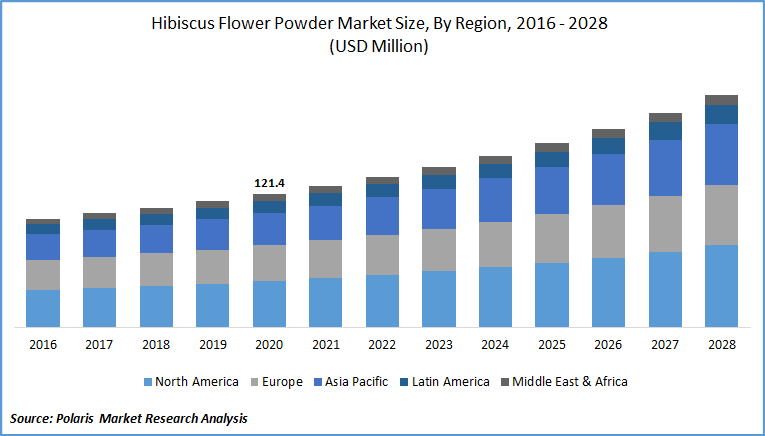
Hibiscus is a genus of flowering plants known for its large, vibrant blooms. Native to tropical and subtropical regions, hibiscus flowers are widely recognized for their beauty and cultural significance. In addition to being ornamental, they hold medicinal properties and are used in herbal teas and skincare products. In Hindu rituals, hibiscus is often associated with devotion and is offered to deities during religious festivals like Navaratri. Its symbolism of purity, power, and spiritual connection makes it a revered flower in various traditions.
Importance of Hibiscus
Hibiscus tea is a popular drink known for its many health benefits. It's packed with antioxidants, which help control high blood pressure and lower blood sugar levels, promoting better heart health and reducing the risk of heart disease. The tea also has anti-inflammatory properties that support liver health and boost the immune system by fighting off infections.
For those looking to lose weight, hibiscus tea can aid in weight management and improve digestion. Women may find relief from menstrual cramps when drinking this tea. Additionally, hibiscus can help lower cholesterol and blood fat levels, further benefiting heart health. It may also offer anti-aging effects and support healthy hair.
With its rich cultural significance and various health benefits, hibiscus tea is more than just a tasty drink—it's a great choice for those seeking a healthier lifestyle.
Cultivation of Hibiscus
1. Climate and soil Requirement
-
Hibiscus thrives in tropical and subtropical regions. It prefers warm temperatures ranging from 15°C to 32°C. While it loves full sunlight, it can tolerate partial shade.
-
The plant grows best in well-drained, fertile soils rich in organic matter. Slightly acidic to neutral pH levels (6.0 to 7.5) are ideal.
2. Propagation Methods
-
Hibiscus is mainly propagated through seed propagation. Though, it's less common due to variability in offspring.
-
The plant is also vegetatively Propagated. The most common method is cuttings, in which we use semi-hardwood cuttings of about 10-15 cm in length, remove the lower leaves and dip the cut end in rooting hormone before planting.
-
The second method is grafting and budding which is useful for propagating specific varieties. Techniques like cleft grafting or T-budding can be employed.
3. Sowing Time
-
Best done at the onset of the monsoon or during early spring.
-
Maintain a distance of 1.5 to 2 meters between plants to ensure proper air circulation.
-
Dig pits measuring 45 cm x 45 cm x 45 cm. Mix the extracted soil with well-decomposed farmyard manure or compost. Place the cutting or sapling in the pit and fill with the soil mixture. Water thoroughly after planting.
4. Irrigation Practices
-
Water the plants regularly to keep the soil moist but not waterlogged.
-
During dry spells, increase the frequency of watering.
-
Drip irrigation is recommended for efficient water use.
5. Nutrient Management
-
Incorporate 10-15 kg of farmyard manure per plant pit during planting.
-
Apply a balanced NPK fertilizer (e.g., 100g of 10:10:10 NPK) per plant every 6-8 weeks during the growing season. Foliar sprays of micronutrients like iron and magnesium can correct deficiencies.
6. Pruning and Training
-
Pruning: Encourages bushier growth and more flowers. Remove dead, diseased, or crossing branches. Best done in late winter or early spring before new growth starts.
-
Training: Young plants can be trained to a desired shape or form. Support stakes may be used for varieties with heavy blooms.
7. Weed Management
-
Regularly remove weeds around the plants to reduce competition for nutrients.
-
Mulching with organic materials like straw or bark chips helps suppress weeds and retain soil moisture.
8. Pest and Disease Control
-
Common Pests: Aphids, small sap-sucking insects that can cause leaf curling, Whiteflies that cause yellowing of leaves and transmit diseases and Mealybugs hat that appear as white cottony masses on stems and leaves. The control measures are regular monitoring of plants, use of insecticidal soaps or neem oil sprays and introduction of natural predators like ladybugs.
-
Common Diseases: Root Rot, caused by overwatering and poor drainage and Leaf Spots, fungal infections that cause spots on leaves. Disease management include ensuring proper drainage to prevent root rot, removal of affected leaves and application of recommended fungicides if necessary.
9. Harvesting
-
Flowers can be picked when fully open for decorative purposes.
-
Harvesting of the flowers or calyces are done mainly when they are mature and fully colored.
-
Early morning harvesting retains maximum potency.

Market value & prices of Hibiscus
The hibiscus flower powder market has shown significant growth, driven by increasing consumer demand for natural and herbal products. In 2024, the market is expected to reach a valuation of approximately USD 127.8 million, with continued expansion projected through 2034 at a compound annual growth rate (CAGR) of 5.4%. By 2034, the market is expected to reach USD 215.4 million. Key drivers include growing health awareness and the popularity of hibiscus for its antioxidant and other health benefits, especially in the food, beverage, and cosmetic sectors.
In addition, the Asia-Pacific region leads in the production and demand for hibiscus products, thanks to its vast natural resources and the increasing preference for natural ingredients in health and wellness applications.
In India, Hibiscus rate differs from Rs. 300-Rs. 600/kg.as dried form. Cut flower rate varies from Rs. 8 -Rs. 15/flower as fresh. In Navaratri season price can be rise double depends upon availability at different places.
(Source - Indian Institute of Horticultural Research)
















